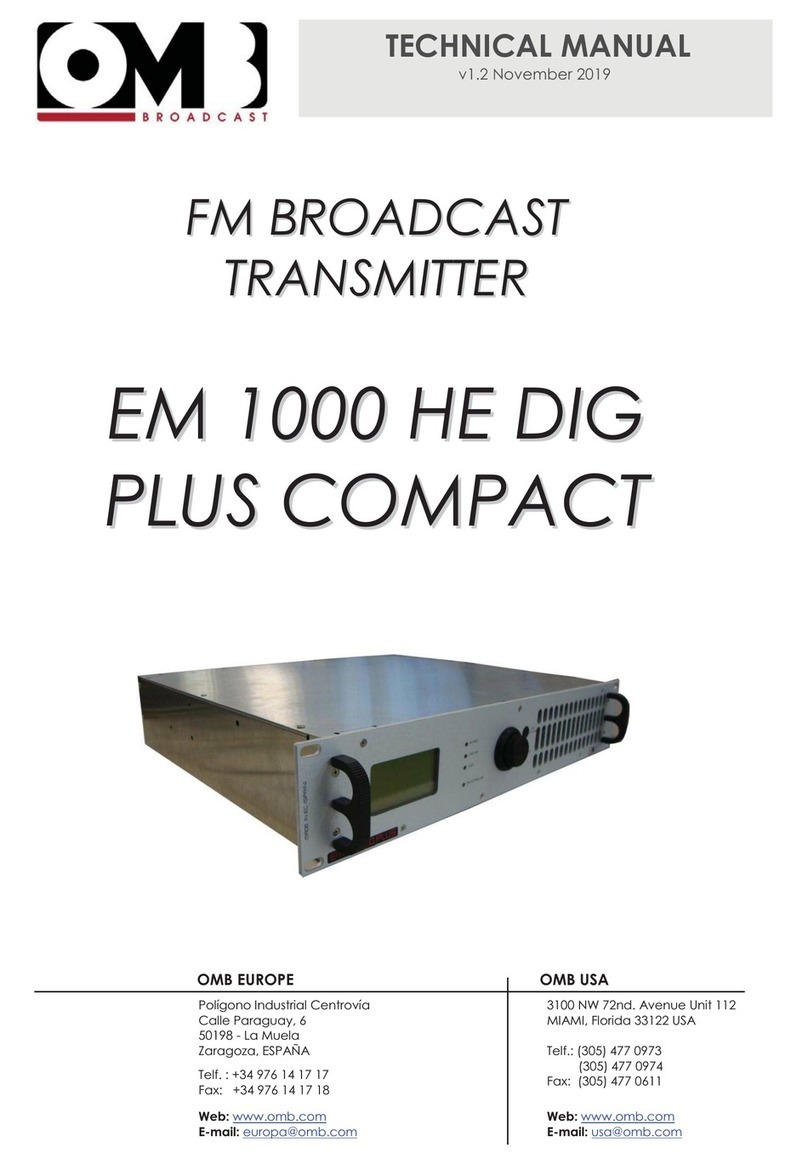LIMITED WARRANTY
About Installation_____________________________________________________________
1. - Mains Voltage must be kept between ±10% about its nominal value, unless otherwise
specified. If were variations exceeding this tolerance, it will be indispensable to install a voltage
stabilizer system within station. If transient overvoltages, due to electric motors, or other devices
of this sort connected to the distribution line, were present, or if the distribution line is exposed
to atmospheric electrical discharges, it must be indispensable the installation of isolation
transformers and gaseous dischargers before connecting any equipment within station.
2. - All equipments must be connected to station ground system in order to avoid damage
both to equipments and maintenance personnel too. It is necessary to connect a differential
automatic switch (lifesaver) at station.
3. - Some equipments does not include interlock protection for open doors, covers or
connectors. In that case, these equipments must be kept in key –locked places, with access
only to conveniently qualified personnel that is previously noticed about not to open doors,
covers or connectors without disconnecting station mains switch before performing this job.
4. - Transmitter equipments NEVER will be operated with output powers over its nominal values,
or with signals or input informations others than those specified in its individual characteristics.
5. - Ambient temperature inside equipments' room, will accomplish technical specifications of
equipments installed at station lodge. In absence of such specifications, maximum allowable
temperatures will be from -5 to + 45ºC for Television equipments, and from 0 to + 40ºC for
Sound Broadcast equipments.
6. - In case of operation at abnormally high or extremely high temperatures (over 30 to 40 º
C), it is obligatory to install a forced cooling system that will keep temperature below its upper
limit. In case of operation at abnormally or extremely low temperatures, it will be obligatory to
install a thermostatic controlled heating system for equipment's room.
7. - Both equipment's surroundings and room must be free of dust and dirt. Ambient relative
humidity will be kept below equipment's extreme specifications. In case of absence of this
specification, allowable maximum will be 90 % of relative humidity, non-condensing. Average
relative humidity will be kept under 70%, non-condensing.
8. - Every transmission equipment that can radiate some quantity of RF power, must be
connected to a load or antenna system, suited to its individual specifications , before being
energized.
9. - Maximum allowable VSWR in antenna systems both for Television or FM Radio Broadcast
operation of a given transmitter, will be 1.25:1, unless otherwise specified.
10.- For those transmitter equipments having power valve amplifiers, and that doesn't has an
automatic shutoff cycle, and must be manually turned off, as a first step high voltage, or
anode voltage, will be disconnected, keeping forced cooling system working during at least 5
minutes after high voltage disconnection, and only after this time, cooling system & filament
voltage can be shutted off. O.M.B. Sistemas Electrónicos, S.A., is not responsible of damages
to those power valves caused by sudden AC mains failures at station where our equipments
are installed.
11.- Periodically, monthly as a maximum, technical personnel must visit station in order to
perform a general equipment maintenance, unless otherwise specified. This maintenance will
include output power check, VSWR of antenna systems, forced cooling or heating systems





























